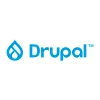
Drupal
Overview of Drupal
Drupal stands out as a powerful CMS ideal for organizations demanding flexibility and control.
Its robust architecture expertly manages complex content structures, user permissions, and intricate workflows.
Drupal's modular design allows tailoring features to specific needs, ensuring optimal performance by avoiding unnecessary bloat.
Security is paramount, making it a trusted choice for government and enterprise-level applications.
While Drupal presents a steeper learning curve compared to simpler CMS platforms, the investment pays off in its unmatched scalability and customization capabilities.
The active community provides extensive resources and support, aiding developers in leveraging Drupal's full potential.
For organizations prioritizing security, scalability, and the ability to create highly customized digital experiences, Drupal remains a top contender.
The ongoing CMS initiative further enhances usability, making Drupal more accessible to a wider audience.
Pros
- Highly flexible content architecture
- Excellent security and permissions
- Scalable for enterprise needs
- Robust taxonomy management system
- Modular design enhances performance
Cons
- Steep learning curve exists
- Theming system is complex
- Requires skilled Drupal developers
Main Features
Modularity
Drupal's modularity allows users to enable only necessary features, improving performance. Each module can be independently updated and managed. This reduces bloat and makes it efficient. It also allows developers to contribute specialized functionality. The core remains lean while extensions add complexity as needed.
Taxonomy
Drupal's taxonomy excels at organizing complex content. Hierarchical vocabularies and tagging create relationships. This improves content discoverability. It's crucial for large sites. The taxonomy system supports faceted search and dynamic content listings. It allows granular control.
Security
Drupal boasts a dedicated security team and proactive approach. Regular updates address vulnerabilities. Core coding practices prioritize security. Drupal includes tools to mitigate common exploits. This makes it suitable for sensitive applications. Many government agencies trust Drupal.
Scalability
Drupal is designed to handle high traffic and data volumes. Caching mechanisms and database optimization are built-in. It supports horizontal scaling across multiple servers. This ensures consistent performance under load. NASA and the UN use Drupal.
Content Workflow
Drupal offers customizable content approval workflows. This is essential for organizations with many contributors. It supports multiple roles and permissions. Editorial guidelines can be enforced. Version control and content moderation are included. This ensures quality control.
CMS Plugins
Editor Features
CMS Themes
Pricing
Check their website for pricing details.
Check pricing on Drupal